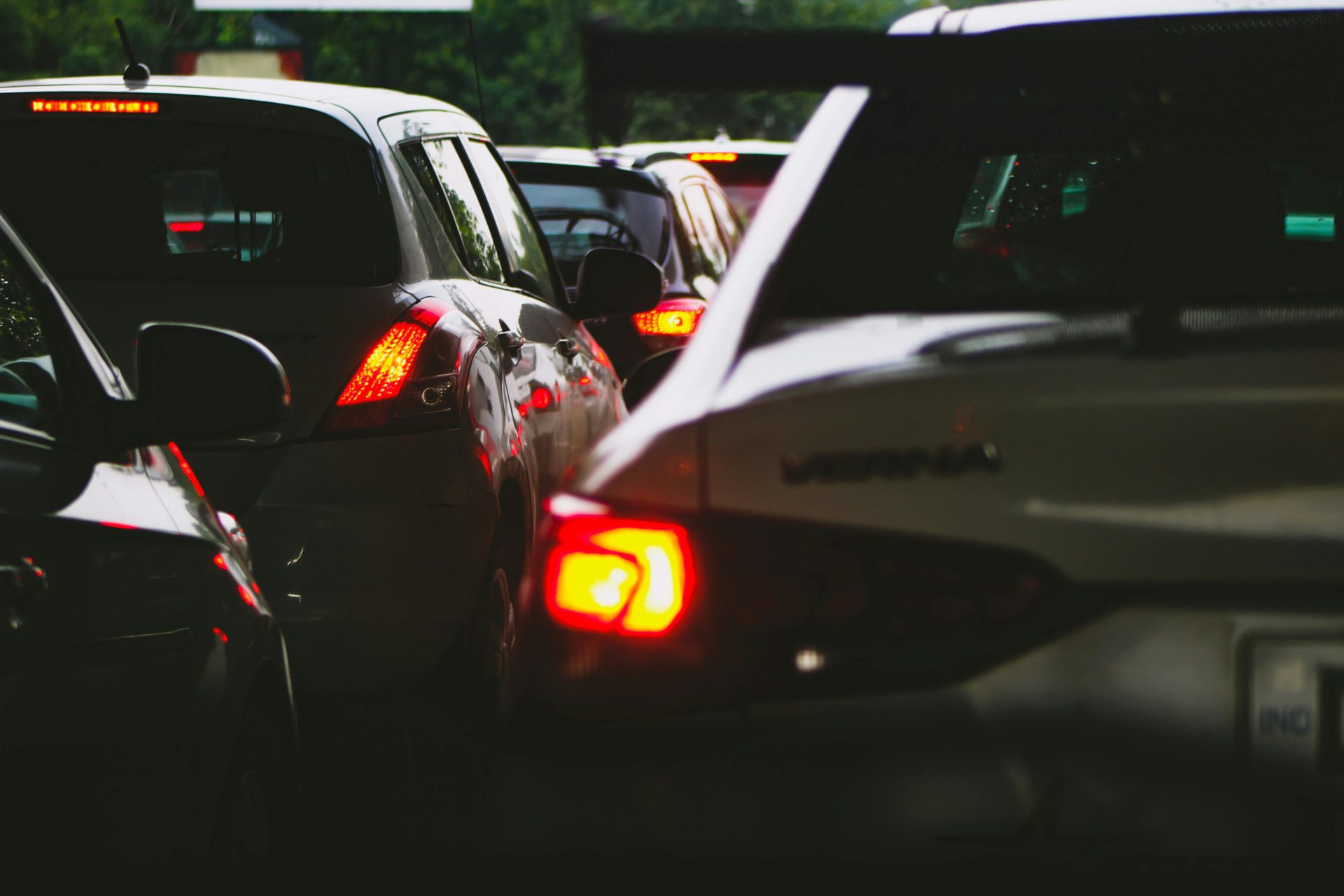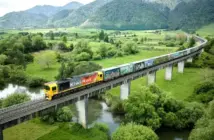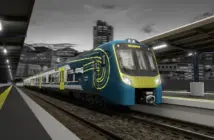Not to be outdone by National‚Äôs mega roads plan, Labour announced a $35-45 billion harbour crossing programme that doubles down on the transport planning mistakes of Auckland‚Äôs past, Greater Auckland’s Matt Lowrie writes

Two new three lane road tunnels under the Waitemata Harbour, one going in each direction, and a separate light rail tunnel that will link to the existing Auckland Light Rail corridor is the proposed plan for a second Auckland harbour crossing.
The twin road tunnels would not be contingent on the light rail tunnels, with phasing options for the road tunnels to be considered by Waka Kotahi NZ Transport Agency, including whether to build both tunnels at once or separately. In either case, additional busway, driving and cycling and walking capacity will be created at each stage.
Separately, a future light rail tunnel is proposed from the Wynyard Quarter, under the harbour east of the Auckland Harbour Bridge, and on to six new stations on the North Shore. This too would be phased. Construction would not be expected to begin until after at least the first of the two road tunnels is completed.
Auckland’s history (including the construction of the original Harbour Bridge) is one of coming up with plans just like this – only for the public transport, walking and cycling options to be dropped later, leaving us with roads and driving as the only realistic option for most people.
And that‚Äôs almost certainly what will happen here too.¬ÝWhen it comes to a harbour crossing, what you build first is all that matters. If things proceed as stated above, Waka Kotahi will build the additional road tunnels ‚Äì and then they, or some future government, will say we can‚Äôt afford to build the light rail component, and will cancel it.
How did we get here, now?
Earlier this year, Waka Kotahi¬Ýconsulted on various options for a harbour crossing.¬ÝThe one that‚Äôs been announced was by far the most expensive, would take the longest time to build, and also had the highest C02 emissions from construction. But it was favoured by Waka Kotahi, in part it seems because it was the biggest thing they could build.
“This is a bold plan for Auckland’s future that delivers a modern transport network that will connect all parts of the city,” Prime Minister Chris Hipkins says.
“Reducing congestion requires improvements to both roading and public transport, giving the public choice.
“Under this proposal the network will become joined up, allowing Aucklanders to travel from the north to the south, east and west on public transport – freeing up room on the existing Harbour Bridge and in the new road tunnel for those who want to drive.
“A second harbour crossing is needed as soon as possible, and construction is planned to start by the end of this decade and why we are proposing a phased approach, ensuring additional capacity is achieved after each stage.
“The recent wind-related bridge closures of the Harbour Bridge, and the increasing frequency of flooding on the approaches north of the bridge, illustrate the city’s vulnerability to interruptions. These new tunnels future-proof the city’s transport network by reducing reliance on the Harbour Bridge while creating fast new options for getting in and out of the city.
‚ÄúA project such as this must be delivered in stages, like the Waikato Expressway was, so that the cost and roll-out of each element can be managed carefully and responsibly. The Government has asked the New Zealand Transport Agency ‚Äì Waka Kotahi to accelerate work on essential first steps towards realising a transport plan of this scale.”
Opportunity cost
Let’s be clear, this is not a bold plan, nor will it “connect all parts of the city.”
If we really wanted a “bold plan for Auckland’s future”, for the projected cost of these tunnels and the one planned for the City Centre to Mangere line, you could build about 300km of surface-running light rail all over the region (or indeed the country).
To put that in perspective, Melbourne’s entire tram network – the longest in the world – is about 250km. For another comparison, combined with Auckland’s nearly 100km of heavy rail network, 300km of surface light rail would give Auckland a network about the same length as London’s 11 underground lines. That would be bold, deliver world class PT for Auckland, have significantly more capacity than this one line from Albany to the Airport ever could, and importantly, deliver us an entire network.
A breakdown of the costs shows the road crossing and SH1 improvements coming in at $13-16.5 billion with the new light rail line coming in at $21-27 billion.
- Indicative cost of road tunnels: $12-15 billion
- Indicative cost of SH1 improvements: $1.0-1.5 billion
- Indicative cost of Northern Busway upgrades: $0.5 billion
- Indicative cost of walking and cycling improvements: $0.5 billion
- Indicative cost of light rail tunnel (CBD to North Shore): $8.5-11 billion
- Indicative cost of light rail tunnel (North Shore to Albany): $12.5-16 billion
- Indicative overall cost: $35-45 billion
There are currently around 300,000 people living on the North Shore and Hibiscus Coast and by 2048, Stats NZ predict it may grow to around 350,000. So the announced plan amounts to an investment of around $100,000-130,000 per person, or around $300k per household.
And what’s the promised outcome of this investment? Waka Kotahi claims it will result in a 275% increase in daily PT trips across the harbour by 2051 – yet also says it will result in only a 5% change in mode share from Takapuna and a 9% change in mode share from Albany.
What this suggests is almost all the growth in PT usage will come from new residents of the North Shore. Given some of the reaction to changes in the Unitary Plan and the government’s current housing rules, it will be interesting to see how existing residents react when the council has to go through and rezone those parts of the North Shore for 6-storey buildings.
Furthermore, while Waka Kotahi claims the plan will¬Ýreduce¬Ýdaily car trips and thus VKT, that is artificial and based off their predicted¬Ýincreases¬Ýin those numbers. So the actual number of people crossing the harbour by road will likely be higher than today, due to building the road crossing.
As previous analysis has shown, this will make congestion worse and undermine Auckland’s own goals of reducing emissions and reducing traffic in the city centre.
Whither active modes?
Perhaps one of the most familiar and disappointing aspects of the proposal, and more evidence it’s not a serious proposition for our city in this century, is what’s offered for active modes.
Waka Kotahi says that once the road tunnels are built, only then can reallocation of the current bridge lanes be looked at. As well as dedicating two lanes to bus lanes, they say one of the clip-ons could then be used for walking and cycling (skating over the question of e-scooters and other micromobility options currently banned from the bridge).
Leaving aside the irony that Waka Kotahi has been fending off the idea of¬Ýliberating a lane for walking and cycling¬Ýby saying it‚Äôs ‚Äútoo dangerous‚Äù, it‚Äôs ridiculous they‚Äôre leaving the simple and most affordable low-carbon modes until last. Especially given that one of the listed benefits of the proposal is¬Ý‚Äú6,400 people walking or cycling over each day.‚Äù
They even manage to complicate the simple option, by suggesting they’ll look at building an “elevated walkway” on the clip-on to keep pedestrians separate from those on bikes. Logically, access to this would involve stairs and ramps, as well as elevators – thus adding expense, travel time, and another potential point of vulnerability for the trips that should be the easiest and most straightforward.
Reactions so far
This entire plan would be comical, if it wasn‚Äôt so concerning.¬ÝInitial reactions have been¬Ýmixed at best.
Greens co-leader James Shaw says ‚Äúduring the climate crisis, it‚Äôs a bit bonkers to be building more roads,‚Äù with transport spokesperson Julie Anne Genter¬Ýsaying two new three-lane urban motorway tunnels in a climate crisis is pouring fuel on the fire of an already overheating planet.
National says it approves of the road tunnels and the timeline, but¬Ýwould ditch the light rail component¬Ý‚Äì noting that six years in, Labour hasn‚Äôt progressed light rail on the ground.
Mayor Wayne Brown sounds like he‚Äôs¬Ýnot impressed¬Ýby any of it.
“The proposals from both Labour and National to start it by 2029, and spend hundreds of millions of dollars on consultants in the meantime, are about politics, not transport,” he says.
The mayor also says he is looking forward to working on some better, faster and cheaper plans. I wonder if those better, faster, cheaper plans revisit the ideas that have now been set aside, for example a new bridge for public transport and active modes.
Upper Harbour Local Board chair Anna Atkinson, while saying that a new crossing would be pivotal for those on the Shore,¬Ýexpresses concerns¬Ýthat this is a plan that will never happen.
‚ÄúMost people that I‚Äôve spoken to are really worried about the price, and they are worried that is so gold-plated that it would never happen,” she says.
Atkinson was concerned cycleways would be left behind in the new harbour crossing plans.
“In this day and age, people want to walk and cycle, because it’s fitter, it’s freer, it’s cheaper and it’s much better for the climate.
“To say ‘we are going to wait until we have done these horrifically expensive road tunnels before that becomes an option’, I don’t think that’s good enough.”
The whole thing is farcical, from the size of the budget to the details and the staging of the plans. Auckland deserves better than this.












